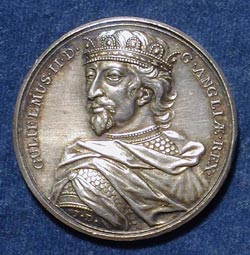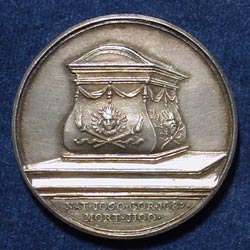

|
WILLIAM II DASSIER, Jean: England, 1731,
Silver, 41 mm William II (1060-1100) (William Rufus) was the son of William the Conqueror and King of England from 1087 to 1100. Rufus, ‘the Red’ because of his ruddy complexion, was William’s third (second surviving) and favorite son. In accordance with feudal custom, William I bequeathed his inheritance, the Duchy of Normandy, to his eldest son, Robert II, and his kingdom by conquest, England , was given to Rufus. William II prevented the dissolution of political ties between England and Normandy, but his strong-armed rule earned him a reputation as a brutal and corrupt tyrant. (Thompson) The reverse of this medal is an allegory of Avarice associated with this ruler, represented by the winged head, indicating that when a man accustoms himself to that vice it always carries him too far. The flames would then represent the consuming frenzy of Avarice, and the withered branches the end result of indulging in this sin. (Eisler) |
|